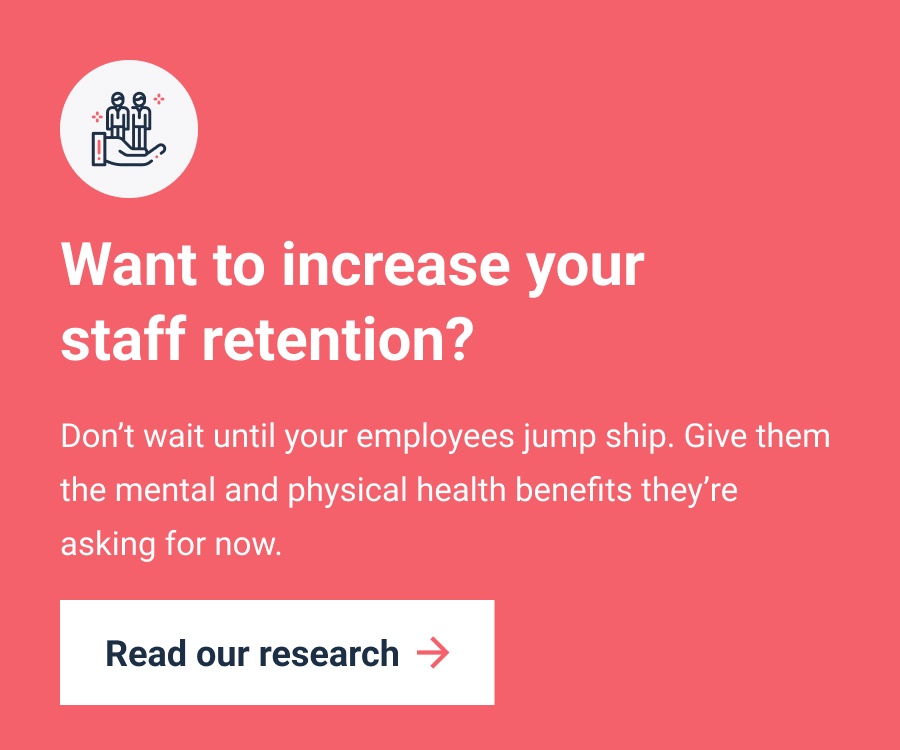A known tension exists between the demands of work and personal life for professionals. Balance between the two is long sought and much discussed. But right now, a growing segment of workers feel that balance may be out of reach: those with caring commitments at home, particularly women.
According to the Resolution Foundation, from the start of the pandemic:
- Labour force participation increased among women. They now make up 48 percent of the workforce.
- A huge shift also occurred in that half a million women increased their role from part to full-time.
- This growth was ‘particularly striking among mothers with young children.’
The report reasons that remote work options brought about in the pandemic opened a door for women with caring commitments. Some women may have also been further motivated by loss of income in their household in that same period.
Whatever their reason, a greater number of women, specifically carers, are present in the workplace. But your business may be at risk of losing their talent.
Research shows of eight in ten people who report shared caring responsibilities, women were twice as likely to feel forced to quit their job due to care work and to do the greater share of work.
This blog explores the consideration carers need and how you can support your workers with caring commitments through awareness and simple changes.
Know the players: identify those with care responsibilities
A worker with caring responsibilities is an individual who participates in the workforce while caring for any other individual, unpaid. While surveys show women tend to hold primary care roles, consider that anyone you manage could have care responsibilities.
If you plan to support your workers who have care relationships, the first step is identifying caring relationships and knowing what that could mean for your worker. This includes relationships for workers who are:
- New and expectant mothers. Any new parent is figuring out sleep and feeding schedules. Some of your workers or their new child might have complications such as premature birth to address.
- Parents or guardians of littles. These workers navigate daycare schedules, pickups and drop-offs and sick days. They might be short on sleep too.
- Parents to school-age. When school age hits, activities and homework are in the rotation.
- Parents to children with special needs. These carers add in appointments, unexpected bad days, and recurring sicknesses.
- Partners to someone with needs or illness. It’s not always a child who needs your worker as much as you do. Some workers might have partners with mental health issues or serious illness.
- Children caring for parents. Adult children take on caring responsibilities at many different ages depending on the health of their parents.
- Other relationships. Be aware that some caring relationships may involve siblings, more distant relatives or even friends.
And never forget that some of your workers are in the middle, with care responsibilities that span generations.
Understand the personal nature of caring relationships
As varied as caring relationships can be, their nature will also vary. This is affected by a person’s style of caring, level of responsibility and the needs of their situation. But it could include responsibilities like:
- Appointments. Some care means regular appointments during the business day.
- Telephone calls. Some situations require calls to schedule appointments, talk to in-home care or sitters or listen to results from doctors.
- Sickness. Nothing can put a caring rhythm in upheaval faster than unexpected illness.
- Bad days. If a caring relationship involves needs which mean bad days, such as with mental health, those days mean added challenges for workers.
- Losing help. Good help is hard to come by and harder to lose. Losing a nurse or sitter creates hardship in a caring relationship.
When each situation is unique, how do you make provisions and accommodate these relationships to help restore work and life balance for all your workers? And why is it important?
Moving mountains (or meetings) for your people
The same women juggling commitments also represent a pool of talented individuals who care about their work. Acknowledging care commitments is a real part of work and life balance for your workers.
What workers with care commitments need is consideration. Because a carer’s responsibilities can be unpredictable, this primarily takes the form of flexibility in:
Work arrangements. Remote work options led many women to enter the workforce, so it matters to them that flexible work arrangements remain available. This can also extend to offering alternative working hours.
Management styles. Results-based management focuses on whether the work is getting done and not if someone is at their desk. This is key in empowering workers to manage their own time to get the best results on both sides.
Schedules. Moving a meeting might be akin to moving a mountain for your workers. Understand whose presence is essential and who can be excused. Reschedule meetings or make them hybrid when you can.
Support. Benefits packages can address caring relationships through access to tools and resources. The personalised pathways of an app like Symbio can help your workers navigate their own well-being.
Improved well-being thinks outside the box
You want your workers who care for others to think of the balance between work and caring as a team effort, not a power struggle.
Flexibility might mean letting an employee work their hours over four days a week so they can handle childcare. It might be finding a different day to hold weekly meetings to avoid a hard-to-schedule appointment. It might look like ensuring specific roles have trained back-ups to step in short notice. It’s finding those opportunities to turn those seeming mountains of conflicts into molehills.
If line managers are empowered to acknowledge conflict and remove it where they can, these acts become simple changes in the name of flexibility. It demonstrates understanding of what it means for your workers to care about work and care well for those they care about most.
And this flexibility means you enable a valuable segment of the workforce to work well and continue to add value to your business.






